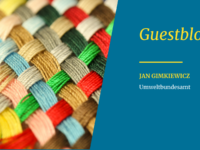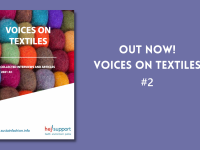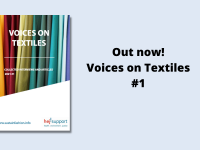Cotton Blends

Cotton is the most prevalent natural fiber and one of the most popular textiles in the world, accounting for approximately 21% of global fiber use.1 While cotton has many positive attributes for its use in clothing production, there are disadvantages to this natural fiber as well. For example, cotton clothing can be comparatively more expensive than synthetic options, and it is not always the most durable and long-lasting.2 To improve and balance these limitations, it can be combined with other fibers to create blended fabrics to produce clothing with more desirable properties.
The most predominant cotton blend is cotton and polyester.3 Cotton and polyester blended fabrics combine the absorbency and heat conduction of cotton with the beneficial characteristics of polyester, such as durability and shape retention.3 One of the primary reasons cotton-polyester blends are widely used is due to their versatility and ability to be used to produce a wide array of products, from clothing to household items such as bedding.4
The characteristics of blended fabrics depend on the proportion of each fiber component, which provides for various applications of use.3 For example, a 65/35 polyester:cotton ratio is often used for daily apparel, whereas a 50/50 ratio is used to create more absorbent, softer fabrics for other purposes.5
Other cotton blends include cotton and viscose, often used in formal wear and sportswear, and cotton and acrylic, which is used to commonly for knitwear and sweaters.3
Aside from combining the attributes of multiple fibers, blended fabrics also contribute to other practical uses such as supporting cost efficiency, modifying texture(s), increasing production and manufacturing efficiency as well as producing cross-dyed effects.5
For more information about blended fabrics, please refer to the following video by Beate Myburgh:
References
- CO Data. (2018, May 22). What are our clothes made from? Common Objective. Retrieved from: https://www.commonobjective.co/article/what-are-our-clothes-made-from
- Smeader, T. (2010, June). Cotton or poly cotton fabric. Fibre2Fashion. Retrieved from: https://www.fibre2fashion.com/industry-article/5001/cotton-or-poly-cotton-fabric
- Guruprasad, R., Chattopadhyay, S.K., Jadhav, R.K., & More, C.M. (2014, July). Cotton blended yarns – a review of present status. Fibre2Fashion. Retrieved from: https://www.fibre2fashion.com/industry-article/7377/cotton-blended-yarns-a-review-of-present-status#:~:text=Cotton%20is%20blended%20with%20many,weight%20to%20cotton%2Fsilk%20blend.
- Kronberga, G. (n.d.) Guide to cotton, polyester, and blended fabrics. Printful. Retrieved from: https://www.printful.com/blog/guide-to-cotton-polyester-and-blended-fabrics/comment-page-1/#comments
- Textile School. (2018, March 12). Advantages of blended fabrics. Retrieved from: https://www.textileschool.com/159/advantages-of-blended-fabrics/






